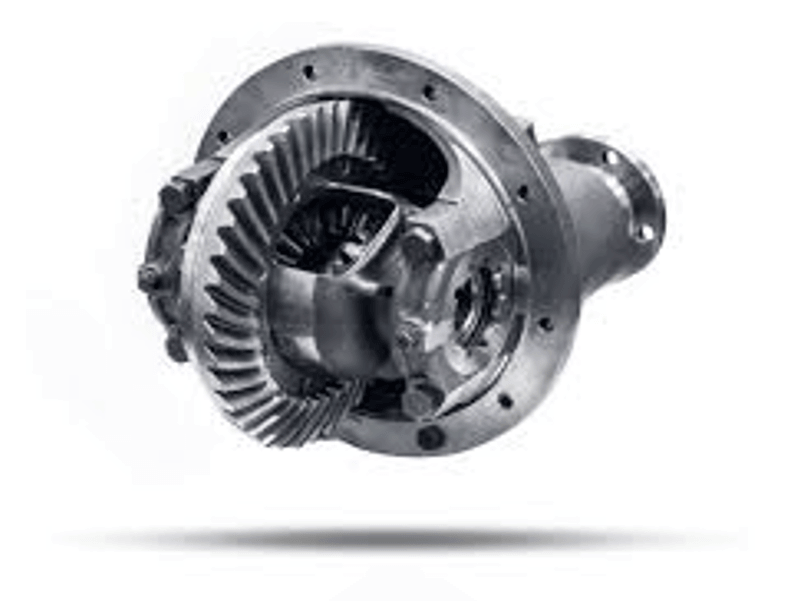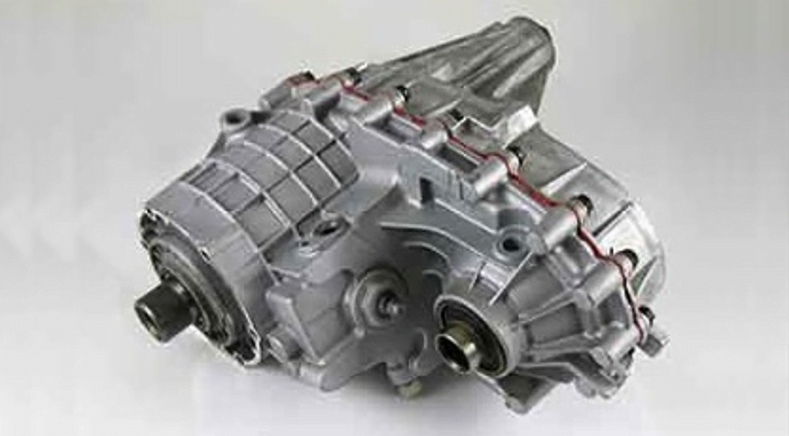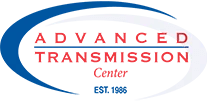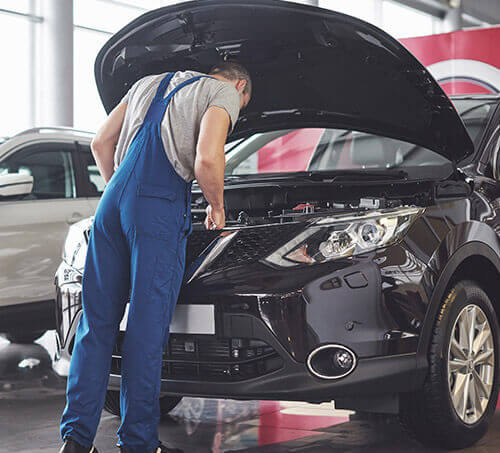Each year automobiles continue to get more complicated. At a time, it was common (and fairly easy) to maintain and repair your own vehicle. Today, the increased sophistication of your vehicle’s various systems, especially the electrical components internal to transmissions, makes it hard to stay on top of the good maintenance required to increase your vehicle’s life expectancy and continued performance. As we have discussed before, your transmission is one of the most complicated systems in your vehicle.
A responsible vehicle owner must be well-informed on major vehicle components including transmissions, transfer cases, and differentials. The Advanced Transmission Center team has been the preferred local transmission shop in Denver since 1986 and has some lessons learned we would love for responsible vehicle owners to remember when considering how to service their transmission. Being more knowledgeable won’t eliminate repair costs, but it can mitigate the risk of severe failure. After all, a transmission is a wearable component so its ultimate failure should be expected. Keeping the following things in mind will help you be a better vehicle owner:
1. Transmission Fluid LEVEL Must Be Monitored Regularly

Transmission fluid is the lifeblood of that component and critical to keeping it running efficiently. Transmission fluid is used to lubricate your transmission and essential for it to run smoothly. It is also a hydraulic fluid that allows mechanic movement of parts that change internal gears. Moreover, it cleans and protects the metal surfaces inside the transmission and helps condition gaskets. The transmission fluid also helps with rotational speed and managing temperature by acting as a coolant. When the fluid is low, it is not able to provide the protection it should, and internal damage is not far behind. A low fluid condition means less volume of liquid to disperse heat generated from the operations of the transmission. As for how to check the fluid level, make sure you read your owner’s manual. For most vehicles, the transmission fluid level should be checked when the car is warmed up and on a level surface. Some vehicles require checking the fluid level while in gear, and some require checking while in neutral (typical among many Chrysler/Dodge models). Additionally, some vehicles do not have a dipstick and require pulling a plug to check the level. If you do not know how to check the fluid level yourself, make sure you work with a local transmission repair shop that can confidently check it on a regular basis.
2. Transmission Fluid Degrades and Regular Services are Necessary
While it is handy to have rules of thumb to make sure you do not abuse your transmission, no one can say for sure that your vehicle is going to be exactly like every other of the same make and model. Differences in driving style, road conditions, highway vs. stop-and-go, etc. all make each vehicle a little bit different. The only way you can be sure that you are staying on top of the need to change your transmission fluid is to look at it on a regular basis. Most transmission fluid is a very bright red color (there are exceptions, but these are rarely seen in standard vehicle applications). When it begins to become a darker reddish-brown, it is time for a transmission service. Would you delay an oil change for multiple years? As much as that sounds silly, plenty of vehicle owners avoid transmission services and increase the likelihood of a catastrophic and costly failure of this component.

Every manufacturer has guidelines for your vehicle’s maintenance schedule. Replacing transmission fluid should be expected but experts will have differing opinions. More frequent transmission service from a qualified transmission specialist will minimize the risk of costly repairs while avoiding a service will dramatically increase the chance of failure. Especially as vehicles get older and there is more mileage wear on the transmission, it is just not possible to say that you are going to get 30-40,000 miles between service. Staying on top of this is going to increase the life of your transmission, and your vehicle will thank you for it!
3. A Transmission Service Will Not Fix Existing Problems…And Could Make Things Worse!
Imagine being on the way to work and realizing your transmission is slipping and/or changing gears harshly. When you step on the gas, the engine revs but you aren’t going any faster. As you eventually shift, it feels erratic with harsh engagements. You ask a friend what you should do, and they say, “you need to go get a transmission service and have the fluid changed.” That sounds reasonable, but IT IS TERRIBLE ADVICE. Slipping and inconsistent shifts are signs there is internal damage within the transmission, and a service is not going to fix that. Whether there is a mechanical failure or electronic malfunction, changing the fluid will not address the underlying issue. Additionally, putting new transmission fluid into a transmission that is having problems can accelerate the internal wear and failure, especially if the symptom is the result of worn clutches. It might seem like a cheap way to keep your vehicle going, but it is likely a waste of money and could increase the eventual cost of a transmission rebuild. Where it might have only needed the soft parts (the clutch packs, seals, o-rings and gaskets that are wearable components) replaced, you may now have to replace hard parts that have failed because of the additional stress of operating in excess heat and friction. If you begin to have transmission trouble, get it to a competent transmission shop and let them inspect it properly! The team at Advanced Transmission Center recommends our free TrueTest InspectionTM to accurately diagnose the issue.
4. Your PTU/Transfer Case and Differential Need Regular Servicing


There is more to your vehicle’s drivetrain than just a transmission. In the case of a front wheel drive vehicle, you have a PTU and in a 4-wheel drive vehicle, you have a transfer case. All vehicles have at least one differential. These “gear boxes” are designed to transfer the power from the transmission to the appropriate axles. While they are a critical part of your vehicle’s operation, they are also the most ignored part of the driveline. They are robust and complex components that require the fluid be checked on a regular basis and replaced at regular intervals. Many “quick lube” type service centers don’t have the tools necessary to check these parts and don’t include them in their multi-point inspections. Fluid leaks in these units are usually slow and don’t leave puddles, but instead build up a layer of grime on the outside of the case. Unless you happen to poke your head under the vehicle to look for it specifically, you may never know the unit is leaking. And once a low fluid level condition is present, that unit will overheat in a short period of time and fail. Rather than trust your car to the cheapest option, make it a point to take your vehicle to a competent transmission and driveline specialty shop for routine maintenance. You could pay a little more for their expertise, but it will save you a LOT in the long run!
5. Vibrations, Noises and Leaks Should Be Diagnosed IMMEDIATELY
We get it…life can be hectic. You live in a stressful world, and the last thing you need on your plate is a problem with your vehicle. You know your truck, car, or SUV better than anyone, and you know quickly when things are not working the way they should. Something may feel off even if you cannot pinpoint the issue or you feel a vibration while driving. You hear a whine or a clunk that wasn’t there before. Or you notice that there is a small puddle under your vehicle when you back out of your driveway. And because your life is busy, you decide to put it off for a while until it is convenient to deal with it. We understand that there is no convenient time to bring your vehicle in for repair, but keep in mind the cost of those repairs is climbing the longer you ignore the warning signs. In many cases, getting your vehicle in as soon as you notice something out of place can mean a very simple and inexpensive repair. That simple leak caught early might mean a simple gasket replacement, where waiting until the fluid has gotten too low and resulted in overheating can require a full transmission rebuild that can cost thousands of dollars. The knocking you heard might be a sign of a low fluid condition that could have been fixed by adding a couple of quarts of fluid but waiting results in internal failure that might mean replacing an entire transfer case or differential. In short, don’t wait! Get your vehicle in as soon as possible when you notice something out of place.
6. Your Tires Are More Important Than You Know

You have probably heard at some point that when you replace a tire, you need to replace two. For a 2-wheel drive vehicle, this is true, across the same axle. The reason is that your differential allows different rates of speed of the tires and wheels from side-to-side during turns, and still allows the vehicle to drive smoothly. When your tires are the same size, the differential has an easy life as the internal gears do not do any work unless there is a difference in rotational speed, most prominent during turning. If you only replace one tire, it will not be the same tread depth and circumference because one will be worn while the other one is new. With two different size tires there is a difference in speed even going straight down the road. This will over-work the differential and harm it quickly. In a 4-wheel drive or an all-wheel drive, it is necessary to replace all four tires at the same time. All four tires need to be of the same size, tread pattern, and tread depth. All-wheel drive vehicles send power to all four wheels at different proportions to the axle. Four-wheel drive can have the power distribution selected by the driver or automatically applied when needed. These vehicles may have a center differential to regulate speed differences from front to rear and conventional differentials for side-to-side differential action, making universal tire size important. Regardless of the vehicle, running different size or different tread type tires will result in excessive wear and tear on the drivetrain. In cold weather states, the same principle applies to winter tires. The money you saved on tires will pale in comparison to the money you are going to have to spend on driveline repair!
In Part 1 of the Things Your Transmission Shop Wished You Knew published on March 3rd, we discussed how your vehicle is intended to operate, how to service and maintain it, and the importance of various systems in terms of the long-term health of your car. In Part 2, we focus on how the way you drive and how you operate your vehicle can influence your drivetrain. Read on for the rest of the things your transmission shop wished you knew about your vehicle!
7. Manually Shifting an Automatic Transmission Is Not Always A Good Idea

Many people who have driven a manual transmission are used to having control of the shifting and find an automatic transmission kind of “boring.” Since the automatic transmission usually takes care of all of the shifting, the driver can concentrate on the rest of the driving experience. Automatic transmissions are set up in such a way that you do have limited control of shifting in the 1-2, 2-Drive range, but that does not necessarily mean that you should. There are limited occasions during inclement weather, towing on steep hills, etc. where it is beneficial for an experienced driver to take over the shift decisions. However, for the most part it is better to leave it alone and let the transmission and onboard computers do their job. Manual shifting of an automatic transmission increases line pressure, creates more internal stress and heat, and will accelerate wear and tear on the transmission. Hence the reason traffic is the greatest enemy of the transmission. No matter how talented a driver thinks they are, they simply do not have the speed or array of information being monitored within the computers, sensors, and inside of the transmission to optimize shifting to get the best performance (and longevity) out of the vehicle. It might look like fun, but if you really need to do the shifting yourself…buy a manual transmission!
8. Rocking Your Vehicle to Get Unstuck in Snow Is Potentially Damaging

Anyone who has lived in areas with significant snowfall has at some time or another gotten stuck in the snow while driving. The first thing everyone does is start to “rock” the vehicle by going forward, then shifting into reverse, back into drive…until hopefully they build up the momentum to get the vehicle unstuck and moving again. While this is a good strategy, you need to be VERY careful how you do this in order to make sure you don’t do severe damage to your automatic transmission. There is really nothing more potentially damaging to the transmission than shifting into reverse while the vehicle is moving forward and shifting into drive while the vehicle is moving backwards. When the torque load is moving forward and is suddenly reversed (or vice versa), you are putting a phenomenal load on the hard parts of the transmission. This doesn’t result in the breakdown of soft parts (clutch packs, etc.) but rather the catastrophic failure of the hard parts (shafts, sprags, gears) that are the most expensive parts inside of the transmission, along with the increasing number of electrical components. Doing this incorrectly will result in an extremely expensive rebuild or require an entirely new unit, so be careful! Make sure your vehicle comes to a stop BEFORE you shift the other way, if only briefly. The timing is tricky, so don’t get in a hurry or jam on that gas pedal too hard. Your transmission, and your wallet, will thank you!
9. The Correct Use of Your Overdrive Button

While there have been forms of overdrive available on automobiles since the 1930’s, it was in the 1980’s that the modern overdrive systems were born. To achieve better fuel economy, most transmissions built since then have two or more gears at the top of the gear range. These have a gear ratio lower than 1 to 1, which allows the tires to rotate more with each engine rotation. These gears begin to engage in the 40-45mph range and up. Most vehicles with overdrive also have some sort of button, switch, etc. to disengage the overdrive. This limits the transmission to the gears that are above a 1:1 ratio. There are 2 potential reasons to disengage the overdrive, depending on the age of the vehicle and your driving conditions. First, on vehicles built between the 1980’s and the late 1990’s, it is a good idea to turn off the overdrive unless you are actually on the highway and driving at highway speeds. If you are driving around town in the 40+ mph range, your transmission is going to be continually shifting in and out of overdrive based on small changes in vehicle speed as you are right on the bottom edge of engagement. Doing this will cause accelerated wear on the overdrive system and will speed up internal damage. The second reason you need to disengage overdrive is when you are driving (and especially towing) up or down a steep incline. Turning off the overdrive forces your transmission to stay in lower gears, which acts as an engine brake and reduces overheating in the braking system. It also keeps the engine from bogging down by shifting into too high a gear when under a heavy load.
10. The Correct Use of 4 Wheel Drive

It’s important to note that here we are talking about 4-wheel drive, not all-wheel drive. In a 4-wheel drive vehicle, you are usually motoring around in 2-wheel drive until some road condition makes you lock in the 4-wheel drive by use of a button, switch, etc. In an all-wheel drive vehicle, there is a center differential of some sort that allows the front and rear tires to turn at different speeds. In a traditional 4-wheel drive vehicle, when engaged the front and rear differentials are turning at the same speed. If you are on snow, ice, or a wet slippery road, having the 4-wheel drive engaged is a good thing and will improve your traction. The binding that happens between front and rear differentials when you are in a turn won’t be an issue because the tires can fractionally slip on the ice or snow. If you leave the 4-wheel drive engaged on dry pavement, your tires cannot slip and you are going to start doing damage to your drivetrain in a hurry. So, remember, if you are out driving in inclement weather and need the extra traction, engage the 4-wheel drive. Once the road clears up, don’t forget to shut it off!
11. Mountain Driving and Towing Shortens Your Transmission’s Service Life

For those living in the Rocky Mountain area, driving in the mountains is a fact of life whether it happens daily or just for recreation. Likewise, with towing, some drivers are faced with it daily while others might do it only for occasional recreation, moving, etc. In both scenarios, you are putting additional stress on the transmission and it is important to be aware of this in order to maximize the life of your vehicle. Mountain driving and towing both increase the load on the drivetrain through both weight and heat. The constant downshifting in the mountains done to save your brakes is going to heat things up in the transmission in a hurry. When pulling something behind your vehicle, the additional weight is likewise going to generate heat. Vehicles that are designed for towing or constant mountain driving usually have additional transmission coolers installed to help combat this. If your personal vehicle does not and you spend a lot of time towing or driving in the mountains, it might be wise to consider having a supplemental cooler installed. It is also good to remember that some vehicles are better designed for these stresses and have heavy duty transmissions that are designed to stand up to the extra abuse. Know what your vehicle is designed for (and NOT designed for) so that you can ensure you aren’t putting your vehicle in an environment that will shorten the transmission’s service life.
12. Towing Your Own Vehicle
Someday you might find yourself in the position of being broken down and needing to tow your own vehicle for service, back to your home, etc. In a perfect world you are going to let a professional tow your vehicle, ideally on a flat bed. Should that not be an option, there are things to consider when towing your vehicle to avoid doing serious damage to the transmission. The right way to tow the vehicle is to raise one end off of the ground, i.e., raising the front end on a front-wheel drive vehicle and raising the rear end of a rear-wheel drive vehicle. Keeping the drive wheels off of the ground during towing ensures that the transmission is not turning and under load. Also, make sure the vehicle is in neutral (and the transfer case is in neutral in a 4WD). If that isn’t an option for some reason, then you need to remove the driveshaft before towing. What you don’t want to do is have all four wheels on the ground and tow the vehicle for any distance with the driveshaft in place. Doing this is going to force your transmission’s internal gears to be turning without the pump pushing fluid through it to keep it lubricated. You won’t have to pull your vehicle very far before you have done serious damage!
13. Keep Your Battery Clean and Serviced Regularly

One of the most overlooked aspects of maintaining a vehicle is making sure that the battery is routinely cleaned and serviced. The most obvious need for the battery is to start the vehicle, but it certainly doesn’t stop there! There are countless electronic systems in your vehicle that rely on power from the battery, including your transmission. As corrosion builds up on the battery terminals, there may be sufficient power to start the car but not enough to keep the other systems operating correctly. The solenoids and other electronic transmission components may not have enough power to function, which can lead to problems. You may see delayed shifting or maybe a shift being missed completely as the transmission isn’t getting sufficient power to its electronic controls. Worse yet, the problems can be intermittent so that you have transmission issues that come and go at random, making it hard to know that the transmission is failing. To ensure your transmission is getting the power it needs to function correctly, make sure that cleaning and servicing your battery, terminals, and cables is a regular part of the maintenance schedule.
If you need service or are having problems with your transmission, transfer case or differential, contact Advanced Transmission Center at either of our locations and we’d be happy to help! Unlike dealerships or many independent repair shops, we are transmission specialists trained to fix issues related to a vehicle’s drivetrain. You can reach out to either location that is most convenient for you.
Conclusion –
If you need service or are having problems with your transmission, transfer case or differential, contact Advanced Transmission Center at either of our locations and we’d be happy to help! Unlike dealerships or many independent repair shops, we are transmission specialists trained to fix issues related to a vehicle’s drivetrain. You can reach out to either location that is most convenient for you.
Advanced Transmission Center is a Colorado-owned and operated auto repair shop with locations in Denver / Lakewood and Westminster. ATC specializes in driveline issues such as automatic transmission repair, four wheel drive repair, clutch replacement, differentials, manual transmissions and CVT. As Colorado's first AAA approved shop our goal is to provide accurate, timely service with exceptional customer satisfaction. All of our technicians are certified in the latest makes and models and we are one of the few transmission repair shops with a nationwide warranty.



 Free Customer Towing Service
Free Customer Towing Service  Free TrueTest™ Inspection
Free TrueTest™ Inspection  Fast Transmission Services
Fast Transmission Services  Comprehensive Warranty in Denver
Comprehensive Warranty in Denver 

























